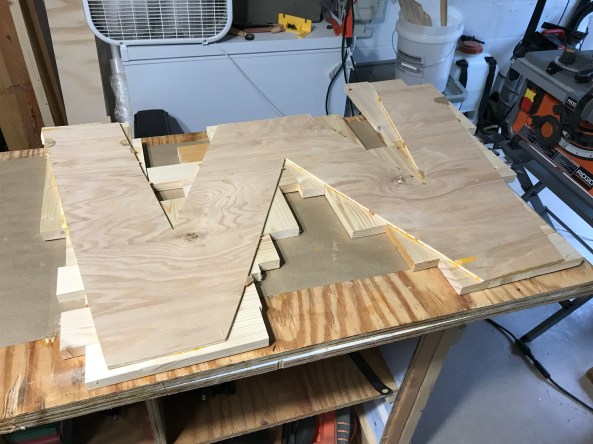Everyone needs a good hobby. Never in a million years did I think I would ever enjoy building things with wood. Sure, I loved using building blocks when I was a child (who am I kidding, I still love it…) but I never thought I’d be using nails and screws and saws to build things that matter.
Our garage is the site of what I hope to be many fun and exciting woodworking projects in the year 2018. I started with cleaning out the garage from all the Christmas decorations and then spent some Christmas money I received on a few new tools that I’ve been wanting.
My first project of the year was something I really did need to build first in order to do any other projects in the future. A workbench. To be more specific, I built a mobile workbench that could roll out of the way when not in use, so our garage didn’t become too cluttered. If you’re interested in how I built this, continue reading to see what I did, and how I did it.
To start – I want to recommend Steve Ramsey and his youtube channel Woodworking for Mere Mortals. He does such a great job of teaching and explaining how to do things. It almost seems like he’s in my garage with me giving me step by step instructions on how to do this.
I used a miter saw, drill, screws, wood glue, some 2x4s, and some leftover plywood. Remember, I had the hurricane boards for my house. Well, I kept all the ones for the windows around the house, but the back porch boards, we decided that they just took up too much room in the garage, and we don’t really need them since there’s really nothing on the back side of our house except a lake.

So here’s where I started – a few boards, a Diet Dr. Pepper, and some determination.

One of the really great things about using the Steve Ramsey videos – he taught me how to use my Mitre saw a lot more efficiently and correctly. Here, I have it set up on top of one of my new toys I bought for Christmas – a Ridgid Table Saw (insert Tool Man grunt sounds here…).
There’s a reason why I decided to build this mobile workbench, and the fact that I have my miter saw on top of a table saw box is one of them. But the other reason is this:

I have nowhere to do my work. Here you see me setting up shop on top of my Hillsborough County garbage can. Not a lot of space, great height, though! This is why I need a workbench.
To assemble the legs, I took some 2x4s and glued them together, then put some screws through them.


I spread the glue out, clamped them together, and then put some screws through them. I have to stop here and brag about one of the really cool Christmas gifts I received this year – a magnetic wristband. It makes work so much easier and is not very bulky at all.

I made 4 sets of legs, and it was time to move on to the next part:

The next part was to start cutting up the pieces that would be used for shelving and surfaces. I have to admit, I was not looking forward to this. Back when I built Josie’s loft bed, I had purchased a Black and Decker circular saw that was battery operated. I thought it would make things a lot easier. I bought Black and Decker because I already had an investment in the Black and Decker family, and I have 4 of their 20-volt batteries.
What I discovered, sadly, was that the Black and Decker battery powered circular saw was simply not a good tool. It cuts slow, loses power quickly, and would often stop and bind up due to lack of power. So I went and bought me a new corded circular saw – a Ryobi, with laser guidance. It made a HUGE difference. I know there are better, more powerful saws out there, but for $40 – you can’t go wrong.
I set my discarded hurricane boards up in my Rockwell JawHorse, which I still think is one of the best investments you can make.

A few minutes later, I had made all my cuts needed for shelving and surfaces:

Next, I started to build the frame for the bench:


I used the top of another plywood sheet in my Rockwell JawHorse for a workstation to make it easier for me to do the work.
Then, I had to start putting in the plywood cuts. This is where I realized I had made a mistake. I custom cut the legs to be a bit taller since I’m 6’2″ tall, but I didn’t adjust my plywood cuts for the dividers and end pieces. So I got a bit creative and put some bottom brackets in to raise the height of the dividers:



The last part of this was to put the top piece on for my work surface and put the wheels on it.

Listen, a workbench isn’t made to be “pretty.” It’s made to be used, abused, worked on, and create art.
Here’s my final workbench, complete with some tools on it, and in its storage space tucked out of the way till the next project:


Here’s to many more projects in the future!!
Link to Steve Ramsey’s Youtube channel: STEVE RAMSEY WOOD WORKING FOR MERE MORTALS
Link to Magnetic Wrist Band: MAGNETIC WRISTBAND
Link to Rockwell JawHorse: JAWHORSE (look around, and be patient, I got mine for much less than advertised here when it was on sale.)

























































































































